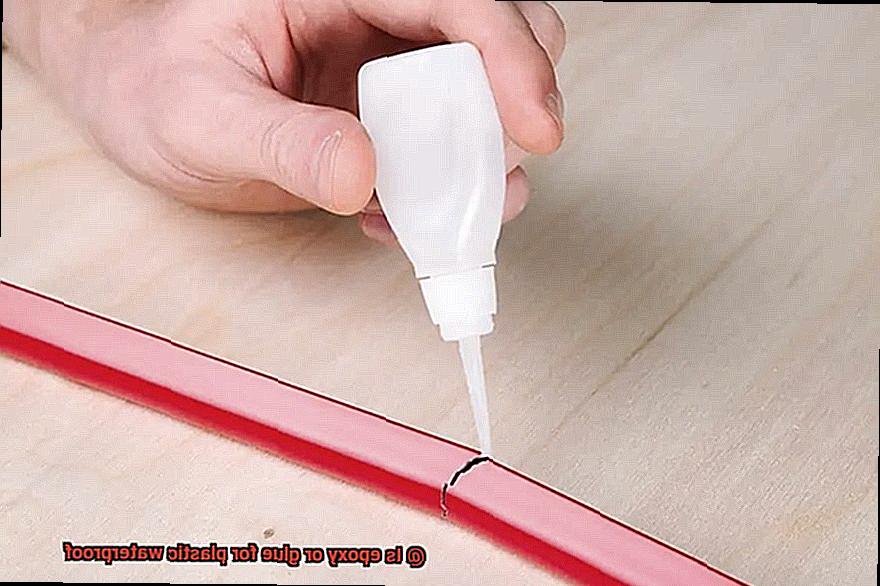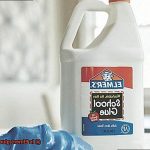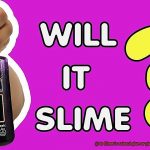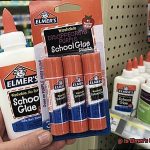Are you looking to create something with plastic that can withstand the test of time? If so, you may be wondering whether epoxy or glue is waterproof. It’s a valid concern, especially if you plan on displaying your masterpiece outdoors.
Now, before we jump into the nitty-gritty details, let’s address the elephant in the room: not all adhesives are created equal. Some epoxies and glues are specifically designed to be waterproof, while others may not hold up as well when exposed to moisture.
But it’s not just about the adhesive – different types of plastics behave differently when they come into contact with water. This means that certain adhesives may work better for some types of plastic than others.
So, what’s the verdict? Is epoxy or glue better for waterproofing plastic? We’re going to explore this question in-depth and debunk some common myths along the way. Plus, we’ll provide practical tips to help you achieve the best results possible.
Get ready to become an expert on this topic – we’re diving deep into the science behind these adhesives and their waterproofing capabilities. So sit back, relax, and let’s get started.
What is Epoxy?
Contents
- 1 What is Epoxy?
- 2 What is Glue?
- 3 Comparing Epoxy and Glue for Plastic Waterproofing
- 4 Advantages of Using Epoxy for Plastic Waterproofing
- 5 Disadvantages of Using Epoxy for Plastic Waterproofing
- 6 Advantages of Using Glue for Plastic Waterproofing
- 7 Disadvantages of Using Glue for Plastic Waterproofing
- 8 Considerations When Choosing a Product to Bond Plastic Materials Together
- 9 Conclusion
It is composed of two components, the resin and the hardener, that when mixed together, create a chemical reaction that forms an incredibly strong and durable bond. This versatile adhesive can be applied to various surfaces like plastic, metal, wood, and concrete.
One of the reasons why epoxy is gaining momentum is its impressive waterproofing properties. When the two components are mixed and applied to a surface, the resulting bond is resistant to water and other liquids. This makes epoxy perfect for applications where moisture resistance is essential, such as marine environments or areas prone to dampness.
In addition to its waterproofing capabilities, epoxy also boasts resistance to heat and chemicals, making it suitable for industrial applications. It can likewise be tinted or painted over once cured, making it a popular adhesive for decorative purposes.
When selecting an epoxy for bonding plastic materials, it’s crucial to choose one that has been specifically advertised for its waterproofing properties. It’s also essential to consider the type of plastic being bonded since not all plastics are equally resistant to water damage. For example, HDPE is commonly used in outdoor furniture and is highly resistant to water damage.
What is Glue?
Today, we’ll explore the fascinating world of glue – an adhesive substance that holds our world together.
Glue is a versatile material used in various industries such as construction, woodworking, and automotive. It’s made from natural or synthetic materials, and its composition varies depending on its intended use. The primary function of glue is to create a strong bond between two or more surfaces.
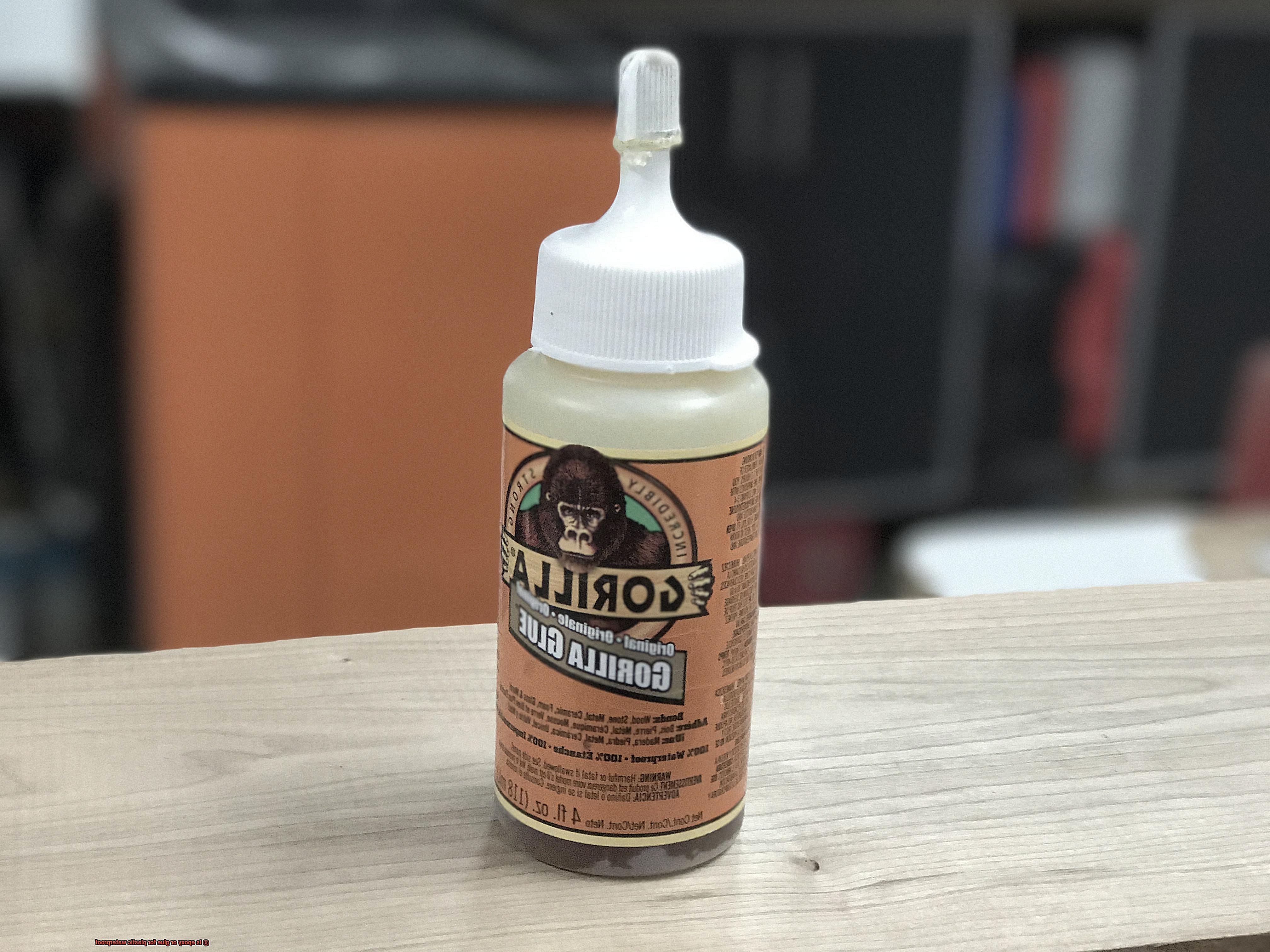
There are many types of glue available in the market, each designed to work with specific materials such as wood, metal, or plastic. Some glues are more versatile and can be used on a variety of surfaces. Liquid glue is easy to apply and can be used to bond uneven surfaces, while spray adhesive is ideal for large surfaces and provides a quick and even bond.
Glue comes in different forms like liquid, paste, and spray. Each form has its advantages and disadvantages depending on the application. For example, liquid glue is easy to apply and can be used to bond uneven surfaces. On the other hand, spray adhesive is ideal for large surfaces and provides a quick and even bond.
From sticking labels on packages to building skyscrapers, we rely on glue every day without even realizing it. In fact, without it, our world would fall apart – literally.
Comparing Epoxy and Glue for Plastic Waterproofing
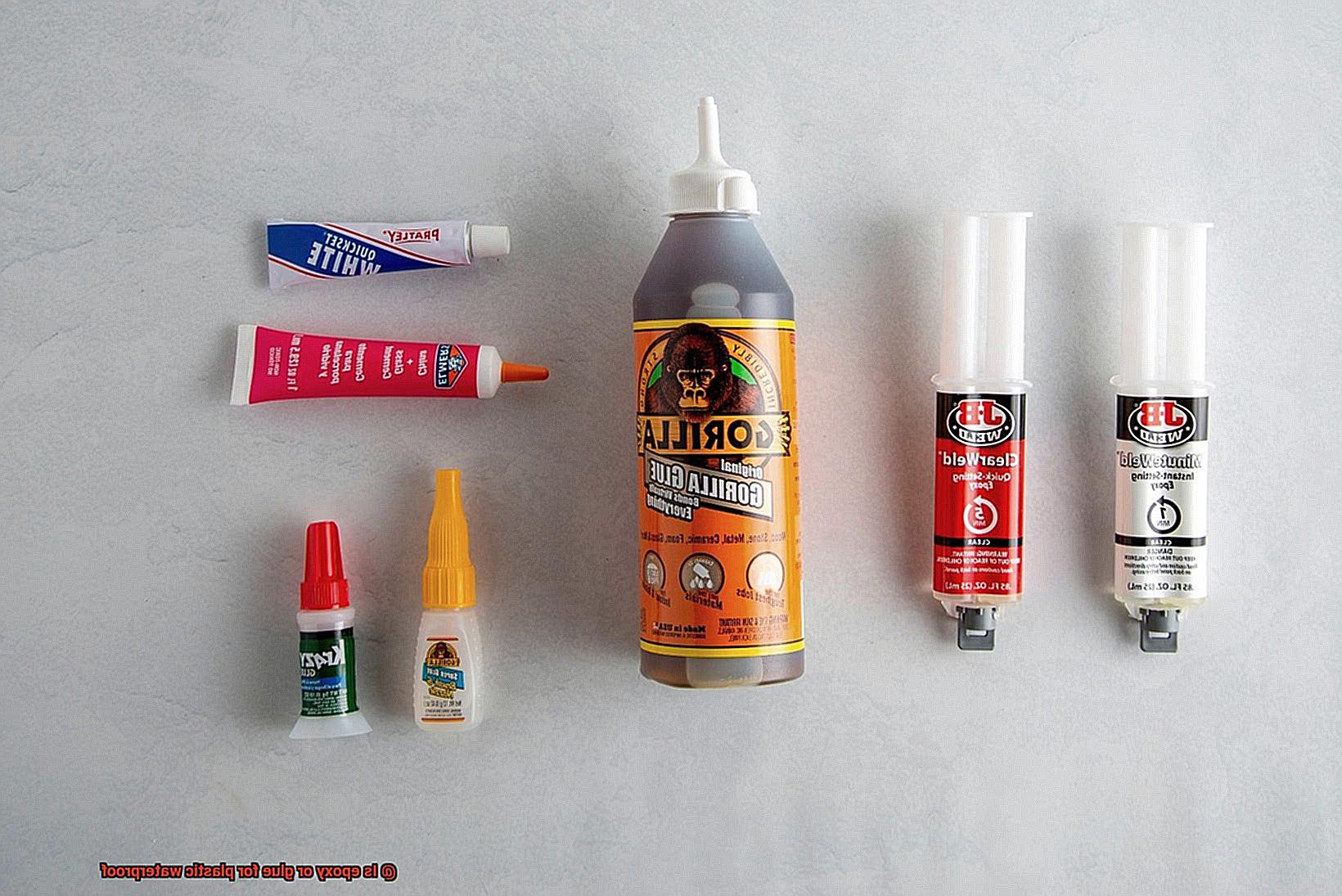
When it comes to waterproofing plastic, there are two popular options: epoxy and glue. They both bond plastic surfaces and make them resistant to water damage, but each has its unique strengths and weaknesses.
Epoxy is a two-part adhesive that consists of a resin and a hardener. When mixed together, they create a strong and durable chemical bond that is known for its strength and resistance to water. It can withstand high temperatures and exposure to chemicals, making it a versatile adhesive for various types of plastic. However, epoxy requires careful mixing and precise application to ensure a proper bond. It also requires curing time before the bond becomes fully strong and waterproof.
On the other hand, glue for plastic comes in different types and formulations, such as cyanoacrylate glue (or superglue), polyurethane glue, and silicone glue. While some of these types can provide good water resistance, they may not be as strong or durable as epoxy. However, glue for plastic may be easier to apply and cure faster than epoxy.
When comparing epoxy and glue for plastic waterproofing, consider the type of plastic being bonded, the level of water exposure, and the desired strength and durability of the bond. For light water exposure and low-stress applications, glue for plastic may suffice. But for more demanding applications where water resistance and durability are crucial, epoxy is the better choice.
Advantages of Using Epoxy for Plastic Waterproofing
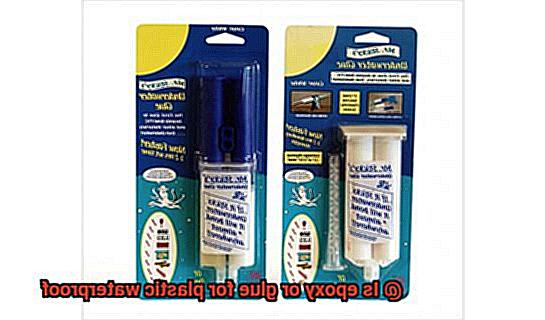
Look no further than epoxy for your waterproofing needs. As an expert on this subject, I can confidently tell you that using epoxy for plastic waterproofing offers a multitude of advantages over traditional glue.
First and foremost, epoxy is known for creating a strong and durable bond that can withstand even the harshest environmental conditions. This means that your plastic surfaces will be protected from water damage, even in the most demanding situations. You can rest easy knowing that your surfaces are safe and secure.
In addition to its strength, epoxy is highly resistant to water and moisture. It effectively seals cracks and leaks in plastic surfaces, providing a long-lasting solution to water-related problems. This is particularly important if you’re dealing with outdoor applications or areas that are prone to water exposure. With epoxy, you can trust that your surfaces will remain dry and protected.
But it doesn’t stop there – epoxy also boasts excellent chemical resistance. It can resist exposure to various chemicals, including acids, bases, and solvents, without deteriorating or losing its adhesive properties. This makes it an ideal choice for industrial and commercial applications where harsh chemicals are present. With epoxy, you can be confident that your surfaces will remain intact even in the face of chemical exposure.
Furthermore, epoxy is incredibly versatile and easy to apply. It can be used on a wide range of plastic materials, including ABS, PVC, polystyrene, and polyurethane. Plus, it comes in different forms such as liquid, paste, or putty, allowing for a variety of application methods depending on the specific needs of the project. You’ll be able to find the perfect type of epoxy for any job.
Disadvantages of Using Epoxy for Plastic Waterproofing
While it may seem like the superhero of adhesives, it’s important to know the disadvantages before diving in. As an expert in this area, I’ve compiled some research notes to help you make an informed decision.
Firstly, applying epoxy evenly can be a daunting task. Mixing two components together accurately is crucial to avoid weak spots in the adhesive bond. If not applied evenly, leaks or other issues may arise, leaving you with less than a perfect outcome.
Next, over time, epoxy has a tendency to yellow when exposed to sunlight. This not only affects the appearance of the plastic item but can also weaken the adhesive bond. If the epoxy becomes brittle due to sun exposure, it may crack or break, allowing water to seep through. So, if your project involves using epoxy on items that will be exposed to sunlight, it’s best to consider other adhesive options.
Another downside of using epoxy is its short working time before it begins to harden and cure. It needs to be applied quickly and efficiently, which can be a challenge for those who are inexperienced with this type of adhesive. Additionally, if excess epoxy is not removed before it cures, it can create a lumpy or uneven surface that may not provide adequate waterproofing. So, it’s important to work fast and remove any excess as soon as possible.
Lastly, epoxy can be more expensive than other types of adhesives for plastic waterproofing. This cost may be a significant factor for those who are working within a tight budget or are looking for a more affordable option. So, before choosing epoxy as your adhesive of choice, it’s essential to consider your budget and weigh your options carefully.
Advantages of Using Glue for Plastic Waterproofing
Glue is the go-to solution for plastic waterproofing with its numerous advantages.
Firstly, applying glue to seal joints, cracks, and gaps in plastic materials is easy and hassle-free. It ensures complete waterproofing and prevents water from penetrating the surface. Unlike other methods like epoxy, there’s no need for complicated mixing processes, making it a time-saver.
Secondly, glue is highly adhesive and durable, creating a strong bond between plastic surfaces even under extreme conditions. It can withstand exposure to water, heat, or cold without weakening the bond. Additionally, it provides a flexible bond that can tolerate movement and vibration without cracking or breaking.
Thirdly, glue comes in different forms such as liquid, gel, or paste, making it versatile and suitable for a wide range of plastic materials. Whether it’s PVC, acrylics, polyethylene, or polycarbonate, you can use glue on all types of plastics without worrying about finding specific adhesives.
Moreover, using glue for plastic waterproofing is cost-effective compared to other methods like epoxy. All you need is a clean surface, the appropriate glue, and a means of applying it to the plastic material. You don’t have to spend extra money on expensive equipment or tools.
Finally, using glue for plastic waterproofing eliminates the need for specialized tools and equipment. It’s a convenient option for DIY enthusiasts who want to undertake small projects at home without investing in expensive tools.
Disadvantages of Using Glue for Plastic Waterproofing
If so, using glue for plastic waterproofing may seem like a quick and easy solution. However, before you take the plunge, it is important to consider the various disadvantages that come with this method.
Firstly, most types of glue are not specifically designed for waterproofing plastic. While they may offer some level of water resistance, they are not guaranteed to withstand prolonged exposure to liquids. This means that over time, the bond created by the glue may weaken, causing the waterproofing to fail. Imagine having to reapply the glue every few weeks just to maintain its effectiveness.
Secondly, using glue can be a messy and frustrating process. Depending on the type of glue used, it may require mixing or careful application to ensure proper coverage and adhesion. This can be not only time-consuming but may also require specialized tools or equipment. Who wants to spend their precious time struggling with a messy adhesive?
Thirdly, safety should always be considered when working with any type of adhesive. Some types of glue can be toxic or emit harmful fumes during application. This poses a significant health risk not only to those applying it but also to those in the surrounding area. Proper safety precautions must be taken into account before using any type of adhesive.
Lastly, glue may not provide an aesthetically pleasing finish. Depending on the type of plastic being waterproofed and the type of glue used, the bond line may be visible or uneven. This can detract from the overall appearance of the object being waterproofed and ruin its visual appeal.
Considerations When Choosing a Product to Bond Plastic Materials Together
With so many options available, it can be challenging to know where to begin. But don’t worry, as an expert in this field, I have compiled some essential considerations to help you choose the right product.
The first and most crucial factor to consider is whether the product is waterproof. If the plastic materials will be exposed to water or other liquids, it’s imperative to choose a product with waterproof properties. Epoxy is an excellent choice for waterproof applications, as it creates a strong and durable bond that can withstand exposure to liquids.
The strength of the bond required is another crucial consideration. Depending on the application, some plastics may require a stronger bond than others. Epoxy is generally stronger than glue and can be used for heavy-duty applications such as automotive repairs.
Drying time is also an important consideration. Epoxy takes longer to dry than glue, which can be an advantage or disadvantage depending on your project’s timeline. If time is of the essence, a fast-drying glue may be a better option.
Lastly, it’s crucial to choose a product specifically designed for use on plastics. Glue can refer to several types of adhesives, including cyanoacrylate (super glue) and polyurethane (gorilla glue). While some glues may be waterproof, not all are suitable for bonding plastic materials together. Always read the label and select a product designed explicitly for use on plastics.
K9fXYmMffqs” >
Also Read: Can glue be used for waterproofing? – Glue Things
Conclusion
In conclusion, the decision between epoxy and glue for plastic waterproofing is not a simple one. It requires careful consideration of several factors to ensure that you choose the right adhesive for your specific needs.
Epoxy is an excellent choice for heavy-duty applications that require a strong and durable bond resistant to water, heat, and chemicals. However, it does require precise mixing and application, has a short working time before curing, can yellow when exposed to sunlight, and may be more expensive than other adhesives.
Glue, on the other hand, is easy to apply and cost-effective compared to epoxy. It’s suitable for small projects or light water exposure but may not provide an aesthetically pleasing finish. Additionally, most types of glue emit harmful fumes during use and weaken over time with prolonged exposure to liquids.
When choosing an adhesive for bonding plastic materials together, it’s crucial to select one specifically designed for waterproofing plastics. Consider the level of water exposure your project will encounter and the strength of the bond required. Also, think about drying time needed for your project timeline and safety precautions necessary when using any type of adhesive.
Ultimately both epoxy and glue have their unique advantages depending on your specific project needs. Careful consideration of these factors will ensure you achieve outstanding results that will withstand the test of time.

